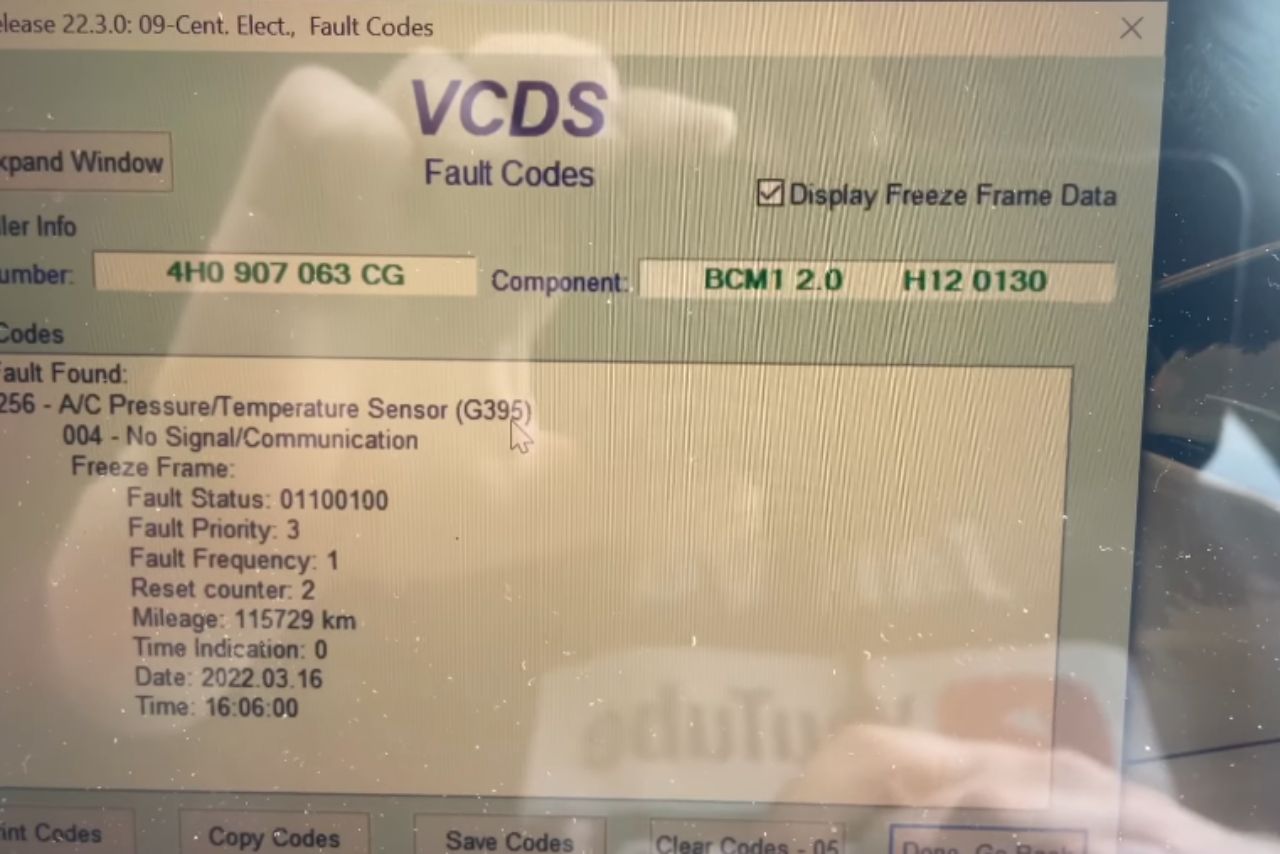The A/C pressure/temperature sensor, G395, is a crucial component in the air conditioning system of your vehicle. However, it is not uncommon for this sensor to develop issues that can lead to incorrect or implausible readings.
One common problem with the G395 sensor is refrigerant leakage, which can affect its performance and accuracy. Another potential cause of G395 error codes relates to faulty sensors themselves. Over time and usage, these sensors may start malfunctioning and provide unreliable data to the ECM.
In this article, we will explore the possible causes of the G395 error code and discuss how faulty sensors, electrical issues, refrigerant problems, and even ECM (Engine Control Module) issues can contribute to this problem.
Table of contents
Possible Causes of the G395 Error Code:

The G395 error code can occur due to various reasons. Here are some possible causes:
| Cause | Description |
|---|---|
| Faulty Sensor | The G395 sensor may have internal faults, leading to incorrect readings that confuse the Engine Control Module (ECM). |
| Electrical Issues | If there are damaged wires or loose connections between the G395 sensor and ECM, it can result in communication errors and faulty readings. |
| Refrigerant Issues | Insufficient refrigerant levels or leaks in the system can cause abnormal pressure/temperature conditions detected by the G395 sensor. |
| ECM Problems | In rare instances, malfunctions within the engine control module (ECM) itself can interfere with accurate interpretation of G395’s signals |
1. Faulty Sensor: G395 Sensor Malfunctioning:

The G395 sensor plays a crucial role in monitoring the pressure and temperature of the A/C system. However, like any other component, it is susceptible to malfunctioning.
When the G395 sensor becomes faulty, it can result in inaccurate or inconsistent readings being transmitted to the ECM (Engine Control Module).
Here are some possible causes and symptoms of a malfunctioning G395 sensor:
If you suspect a faulty G395 sensor based on these symptoms, consulting with an automotive technician would be advisable for further diagnosis and potential replacement if necessary.
2. Electrical Issues: Damaged or Loose Wiring Connections:
Electrical issues can also contribute to the malfunctioning of the G395 sensor and its ability to communicate effectively with the ECM.
Damaged or loose wiring connections can disrupt the flow of electrical signals, leading to inaccurate readings or even a complete loss of communication between the sensor and the ECM.
Here are some possible scenarios where electrical issues might be causing problems:
To identify if electrical issues are behind G395-related errors, consider conducting a thorough inspection of all related wiring components:
| Steps | Actions |
|---|---|
| 1 | Inspect visually for any visible signs of damage such as cuts, abrasions, fraying etc., along with any disconnected connectors |
| 2 | Check for tightness in wire connections ensuring they are properly seated |
| 3 | Clean corroded terminals using an appropriate cleaner and ensure secure reconnection |
By addressing these potential electrical issues promptly through repairs or replacements when necessary, you increase your chances of resolving G395-related error codes stemming from damaged or loose wiring connections.
3. Refrigerant Issues: Low Levels or Leaks:
Refrigerant issues can be a common cause of the G395 error code. When there are low refrigerant levels or leaks, it can lead to abnormal pressure or temperature conditions detected by the sensor.
Here are some key points to understand about this issue:
To address these potential issues related to low refrigerant levels or leaks, it is recommended that you consult with a qualified HVAC technician who specializes in automotive systems repairs and maintenance tasks.
Remember that keeping your A/C system properly maintained helps ensure optimal performance and prevents potential complications arising from faulty sensors like G395.
4. ECM Problems: Rare Cases of ECM Interference:
In some rare cases, the Engine Control Module (ECM) itself can be the root cause of issues related to the A/C pressure/temperature sensor, G395.
When there are problems with the ECM, it may fail to properly interpret signals from the G395 sensor, leading to incorrect or implausible values being displayed.
Here are a few possible scenarios where ECM interference could occur:
It is important to note that these types of ECM-related problems are relatively uncommon compared to other potential causes for G395 errors.
However, if you have ruled out other possibilities mentioned earlier (such as faulty sensor, electrical issues, or refrigerant problems), it may be worth considering an examination of your vehicle’s ECM as part of troubleshooting efforts.
Remember that diagnosing and resolving such complex issues requires specialized knowledge and equipment typically found at automotive service centers or qualified repair shops.
Seeking professional assistance is recommended when dealing with advanced electronic systems like an Engine Control Module.
To summarize briefly: While rare, problems with the Engine Control Module can interfere with proper signal interpretation from the A/C pressure/temperature sensor (G395). Faulty ECM Software glitches Compatibility mismatches.
You can also watch this video to fix the issue:
Conclusion and final thoughts 💭
The G395 A/C pressure/temperature sensor plays a crucial role in detecting refrigerant levels and maintaining optimal temperature conditions.
However, when this sensor malfunctions or encounters issues, it can lead to inaccurate readings and trigger error codes.
Regular maintenance checks and timely repairs are essential for ensuring that your A/C system functions optimally without any errors related to the G395 A/C pressure/temperature sensor.


Leave a Reply